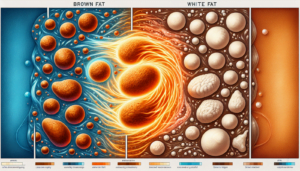Are you curious about how to measure your fat percentage? In this article, we will explore different methods that can help you determine the amount of fat in your body. Understanding your fat percentage is essential for tracking your overall health and fitness progress. By using certain measurements and calculations, you can gain valuable insights into your body composition and make informed decisions to achieve your desired fitness goals. Whether you are looking to lose weight, gain muscle, or simply maintain a healthy lifestyle, knowing how to measure your fat percentage is a valuable skill that can guide you on your journey.
Choosing a Method
Understanding Different Methods
When it comes to measuring your body fat percentage, there are several different methods available. Each method uses a unique approach to estimate the amount of fat in your body. It’s important to understand these methods and their features before deciding which one to use.
Assessing Accuracy
One crucial factor to consider when choosing a method to measure your body fat percentage is its accuracy. Different methods vary in their precision and reliability. It’s essential to assess how accurate each method is and how it measures up to other options.
Considering Cost
Cost is another aspect to keep in mind when selecting a method for measuring body fat percentage. Some methods, such as dual-energy X-ray absorptiometry (DXA), hydrostatic weighing, and air displacement plethysmography (ADP), may require specialized equipment or professional assistance, which can be more expensive. On the other hand, methods like using body fat calipers or measuring waist circumference are more cost-effective and accessible options.
Using Body Fat Calipers
Understanding the Method
Body fat calipers is a commonly used technique to measure body fat percentage. It involves pinching the skin and underlying fat at specific sites on the body to measure the thickness of the skinfold. These measurements are then used to estimate the amount of fat present.
Locating Key Measurement Sites
To use body fat calipers accurately, you need to locate specific measurement sites on your body. These sites include the triceps, biceps, subscapular, and suprailiac areas, among others. By consistently measuring the skinfold thickness at these sites, you can track changes in your body fat percentage over time.
Calculating Body Fat Percentage
Once you have measured the skinfold thickness at the designated sites, you can use a mathematical formula to calculate your body fat percentage. These formulas take into account your age, gender, and the measurements obtained with the body fat calipers. While this method can provide a reasonable estimate of your body fat percentage, it may not be as accurate as other more advanced techniques.
Bioelectrical Impedance Analysis (BIA)
How BIA Works
Bioelectrical impedance analysis (BIA) measures body fat percentage by passing a small electrical current through your body. This method takes advantage of the fact that fat conducts electricity differently than muscle and other tissues. The resistance encountered by the electrical current can be used to estimate your body fat percentage.
Using BIA Devices
BIA devices are often found in scales or handheld devices. To use them, you simply input typical information like your height, weight, and age. Then, you stand on the scale or hold the device, and the electrical current is passed through your body. In a matter of seconds, the device displays an estimate of your body fat percentage.
Interpreting the Results
When interpreting the results obtained through BIA, it’s essential to consider that factors such as hydration level, food consumption, and physical activity can influence the accuracy of the measurements. It’s advisable to take measurements consistently under similar conditions to obtain more reliable results.
Dual-Energy X-Ray Absorptiometry (DXA)
What DXA Measures
Dual-energy X-ray absorptiometry (DXA) is a highly accurate method for measuring body fat percentage. It uses low-dose X-rays to assess the distribution of fat, lean tissue, and bone mineral density in your body. DXA can provide a detailed analysis of your body composition by differentiating between fat and muscle mass.
Taking a DXA Scan
To undergo a DXA scan, you will need to visit a specialized facility equipped with the necessary equipment. During the scan, you’ll lie on a table while the X-ray machine passes over your body. The process is painless and typically takes about 10-20 minutes to complete.
Analyzing DXA Results
Once the DXA scan is completed, the results will provide a detailed analysis of your body composition. This includes measurements such as total fat percentage, lean tissue mass, and bone mineral density. The information obtained from a DXA scan can be helpful in assessing your overall health and tracking changes in your body composition over time.
Hydrostatic Weighing
Understanding Hydrostatic Weighing
Hydrostatic weighing, also known as underwater weighing, is one of the most accurate methods for measuring body fat percentage. This technique is based on the principle that lean tissue and bone are denser than water, while fat is less dense. By measuring your weight underwater and using specific formulas, your body fat percentage can be calculated with a high level of accuracy.
The Underwater Weighing Process
To undergo hydrostatic weighing, you will need access to a specialized facility equipped with an underwater weighing tank. During the process, you will sit on a specialized chair and be fully submerged in water while wearing a bathing suit or tight-fitting clothing. Your body weight is measured both in and out of the water, and the difference is used to calculate your body density and fat percentage.
Determining Fat Percentage
The calculations used in hydrostatic weighing take into account your age, gender, weight, and the density of your body compared to water. This method provides a highly accurate measurement of your body fat percentage. However, accessibility to hydrostatic weighing tanks and equipment can be limited, making it less practical for regular use.
Air Displacement Plethysmography (ADP)
How ADP Measures Body Composition
Air displacement plethysmography (ADP) is a method that uses air displacement to measure body composition. This technique evaluates the amount of air displaced when an individual enters a specialized device known as the BOD POD. By comparing the volume of air displaced with the participant’s weight, body density and fat percentage can be inferred.
Using the BOD POD
To use the BOD POD, you’ll need access to a specialized facility that houses the device. After stepping into the BOD POD, the machine takes a series of measurements, including body weight and volume. These measurements are then used to calculate your body composition.
Interpreting ADP Results
After the BOD POD assessment, you will receive a printout that displays your body composition information. This includes your body fat percentage, fat-free mass, and total body mass. The results obtained from ADP can provide valuable insights into your health and progress towards body composition goals.
Infrared Interactance
Principles Behind Infrared Interactance
Infrared interactance is a method that estimates body fat percentage by measuring the interaction between infrared light and your body’s tissues. This technique is based on the principle that different tissues absorb and reflect infrared light differently. By determining the percentage of light absorbed, your body fat percentage can be calculated.
Performing an Infrared Interactance Test
To perform an infrared interactance test, a handheld device is placed on specific areas of your body, such as your biceps or triceps. The device emits infrared light and measures how much is absorbed by your tissues. By inputting this information and other identifiers like your age and gender into a formula, your body fat percentage can be estimated.
Calculating Fat Percentage from Results
The results obtained through infrared interactance can provide an estimate of your body fat percentage. However, it’s essential to recognize that this method has some limitations, including accuracy variances among different devices and individual variations in how well infrared light interacts with your specific body composition.
Skinfold Thickness Measurements
The Skinfold Measurement Technique
Skinfold thickness measurements are a popular and accessible method to estimate body fat percentage. This technique involves pinching the skin and underlying fat with body fat calipers at specific sites. By measuring the thickness of the skinfold at these sites, it is possible to estimate the amount of fat present in a specific area or the entire body.
Determining Fat Percentage from Skinfold Measurements
To calculate your body fat percentage using skinfold measurements, you need to measure the skinfold thickness at multiple sites on your body, such as the triceps, suprailiac, and thigh areas. These measurements are then input into a mathematical formula that takes into account your age, gender, and other relevant factors to estimate your overall body fat percentage.
Factors Affecting Accuracy
While skinfold measurements can provide a reasonable estimation of body fat percentage, accuracy can be influenced by factors such as the skill and experience of the person performing the measurements. Additionally, factors like hydration level, skin looseness, and individual variations can affect the accuracy of the results.
Measuring Waist Circumference
The Relationship between Waist Circumference and Fat Percentage
Measuring waist circumference is a simple and effective way to assess body fat percentage. Research has shown that there is a strong correlation between increased waist circumference and higher amounts of intra-abdominal fat, which is associated with increased health risks. By measuring your waist circumference, you can obtain an indirect estimation of your body fat percentage.
Taking Accurate Waist Circumference Measurements
To measure your waist circumference accurately, use a flexible tape measure and place it around your waist at the level of your navel, making sure it is parallel to the ground. The tape measure should fit snugly without compressing your skin. It’s important to measure at the same spot consistently for accurate tracking of changes over time.
Interpreting the Results
Interpreting the results of waist circumference measurements is relatively straightforward. The World Health Organization (WHO) has established guidelines for waist circumference that indicate increased health risks based on gender and ethnicity. By comparing your measurements to these guidelines, you can get an idea of your body fat distribution and potential health risks.
Considering Other Factors
Understanding Individual Differences
It’s crucial to understand that there are individual differences when it comes to body fat distribution and percentage. Factors such as genetics, age, gender, and body composition can all influence how fat is distributed in the body. Additionally, lifestyle factors like diet and exercise play a significant role in body fat accumulation and overall health.
Factors Affecting Fat Percentage
There are several factors that can affect your body fat percentage. Some of these factors include hormone levels, metabolic rate, muscle mass, and overall body composition. It’s essential to consider these factors when interpreting and tracking changes in your body fat percentage over time.
Tracking Changes Over Time
Measuring body fat percentage should be viewed as a tool for tracking progress and changes in body composition over time. It’s important to remember that variations in measurement techniques, equipment, and individual factors can lead to slightly different results. By consistently using the same method and tracking changes over time, you can get a more accurate picture of your body fat percentage trends.





